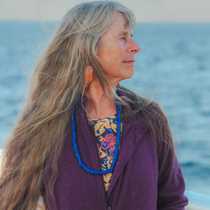Isla San Jose, Isla San Francisco
In the predawn light of this mid-February day, the National Geographic Sea Bird was making her way north along the eastern side of Isla San Jose, heading towards one of several morning destinations. Our primary goal this morning was to continue our search for marine mammals, and as our Expedition Leader made her customary wake up call, we were greeted by a small group of Bottlenose dolphins. They approached the National Geographic Sea Bird, searching for the sweet spot created by the pressure wave of the bow of our ship.
The morning air was warm and very light, giving the Gulf of California a mirror like finish in the early morning light. The clear and smooth waters also provided fabulous looks at these lovely sea creatures watching us, watching them! Our ship continued her northerly passage in excellent conditions finding another large group of Common dolphins and a cow calf pair of Humpback whales. The winds continued to stay extremely light, and an expeditionary decision was made to change plans slightly and make a morning stop at one of the Expedition staff’s favorite arroyos. The northeast tip of Isla San Jose is called Punta Colorado. Through the center of this gorgeous rugged sandstone formation there is a spectacular arroyo. If winds are absolutely perfect a stop can be made to explore this striking section of the island and experience what Baja is so famous for; a desert by the sea in full bloom.
Once all groups were ashore, aerobic, long interpretive, medium and leisure walks all headed up into the winding path of the central arroyo at Punta Colorado. Due to this El Nino year, the rains had awakened the plants providing food for birds, lizards, and insects filling the arroyo with their sounds. The scents of the many plants, providing nourishment in this great web of life, drifted past us as we moved in and around the lush growth. Each turn provided yet another unusual flower, a butterfly, a bird’s nest all nestled in and around a great display of geologic history. The sandstones had fossils of many different shells and marine mammals, while the floor of the arroyo was littered with large and small granite boulders that had eroded from cliffs overhead.
All too soon it was time to return to the beach and make our way back to the NG Sea Bird. Once everyone was back on board, the anchor was lifted and we headed south towards our afternoon destination of a very popular beach called Half Moon Bay on the south side of Isla San Francisco. Here, we had an opportunity to kayak and snorkel for the remainder of the afternoon, remaining on shore for the evening to enjoy a dinner barbecue.
As boats were lowered and gear was brought ashore, the light winds dropped to less than a whisper. The waters of the Gulf of California turned into a mirror, the same as they appeared at the first light of day. Our head Chef Singyn Hunter pulled out all the stops and crafted handmade pizzas, fine local tuna and traditional ribs on the grill for all to enjoy. To the west the sun set over the mountains of the Baja peninsula, while the moon grew brighter in the evening sky and still not a breath of air could be felt.
The day had started as gently as it had finished, leaving us all with a sigh of gratitude for having been in the right place at the right time; enjoying the unique place called Baja California, Sur.



